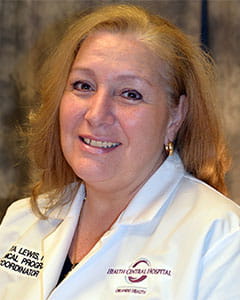Think You’re Too Young to Have a Stroke? Think Again
Every year, more than 795,000 people have a stroke.
Though the majority of people who are hospitalized for a stroke each year are age 65 and over, more young people are experiencing this condition. According to CDC research spanning more than a decade, ischemic stroke — which accounts for 90 percent off all stroke cases — rose 47 percent and 36 percent, respectively, for men and women between ages 35-44. The numbers were even more stark for younger men, with a 50-percent increase in stroke-related hospitalizations for those in their 20s.
Stroke is commonly thought of as an older person’s disease, but these figures are startling and point to an unfortunate trend: stroke rates may be declining in the elderly, but they are rising among young people.
The question is why?
Potential Causes of Stroke in Younger People
First, it’s important to mention that only 10 percent of all stroke cases every year occur in people under age 50. Still, recent studies show that these occurrences are increasing among people in their 30s, 40s. In some cases, men and women as young as their mid-20s have suffered a stroke.
The same risk factors for stroke that exist in the elderly also exist for younger people. High blood pressure is the most significant risk factor, and according to one study, a third of 15 to 34- year olds and more than 50 percent of 35 to 44-year olds who had a stroke also had high blood pressure.
Rising obesity rates and poor lifestyle habits may be two other culprits. According to government data, 2 in 3 adult Americans is considered overweight or obese. One-third of children between the ages of 6 to 19 are in that same category. Being overweight or obese is another significant risk factor for stroke, and the higher your BMI, the higher your stroke risk. Excess weight leads to blockages and buildup in your arteries that can cause blood clots. Stroke occurs in cases where this clot is near the brain, as this vital organ is starved of blood flow and oxygen. Obesity also increases your risk of high cholesterol, high blood pressure and diabetes — all of which also increase your risk of a stroke.
Genetic conditions, heart issues and blood thickness may also affect your stroke risk, but these factors are beyond your control. It’s important to focus on the things you can change to reduce your risk.
Ways to Minimize Your Stroke Risk
Stroke is the leading cause of death in the U.S., but there are several ways to minimize your risk. Healthy lifestyle choices are critical to preventing stroke. If you smoke, especially if you are a young woman who takes birth control, you should do everything in your power to quit. A sedentary, inactive lifestyle also can lead to weight gain and potential obesity-related health conditions like stroke, heart disease and diabetes. If your diet is filled with saturated fat, sugar, salt and unhealthy, high-calorie foods, opt instead for nutrient-rich foods like whole grains, fruits, vegetables and lean protein. I know it’s easier to talk about making a change than actually doing it, but start with small substitutions to improve your diet long term.
Stroke is a serious condition. It can lead to debilitating, lifelong ailments and affect a person’s mobility and ability to speak. No matter what your age, you can have a stroke. Too often, young people who are experiencing stroke symptoms will pass them off as something that’s less serious or that can be cured with some rest and over-the-counter medication. In some cases, it’s more serious than that. If you experience sudden loss of speech or movement, blurred vision, weakness or numbness in any part of your body and a severe headache, you should see a doctor immediately. People who have any of the risk factors I previously mentioned, should be extra vigilant about the signs and symptoms of stroke. Doing so may just save your life.







